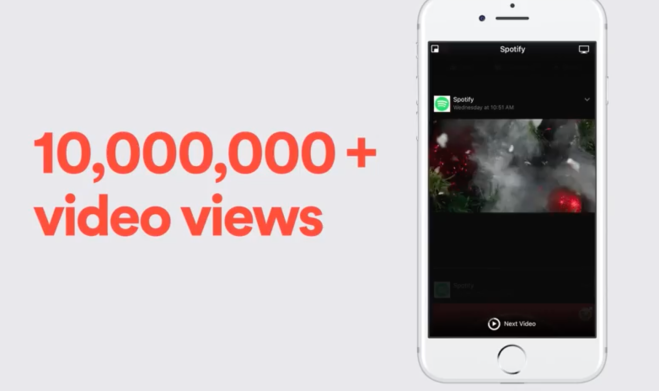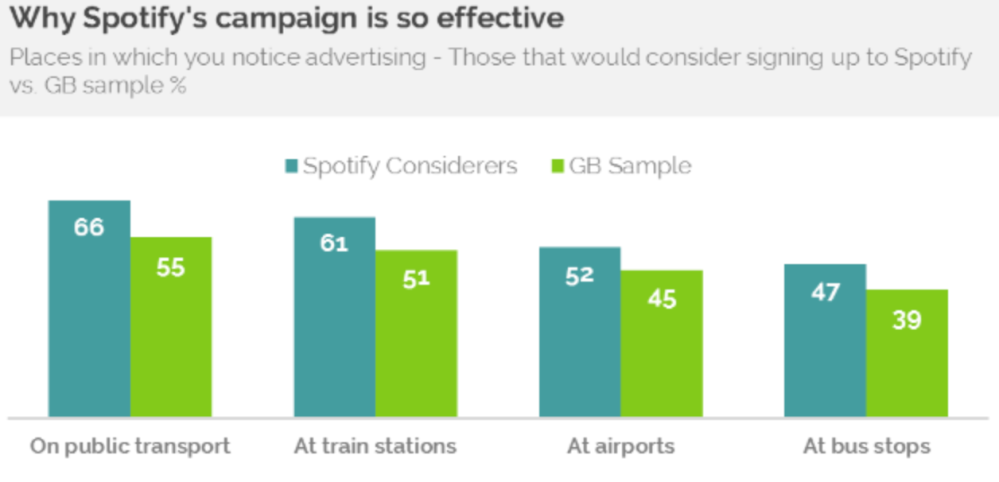HISTORY: WHAT IS SPOTIFY?
Spotify, a Swedish startup launched in 2008. It is a platform that grants a music subscription. The app allows one to listen to the latest songs and create playlists for others to enjoy. In the last decade Spotify has grown significantly reaching over 58 countries worldwide with over 50 million users.
SUMMARY
On November 28th Spotify launched a campaign called – “Thanks 2016, it’s been weird”. Bidding adieu to 2016 by displaying an accumulation of data based on subscribers like favourite playlists, number of times a specific song or playlist was played and much more. The original campaign launched at the end of 2016 but served as a permanent archetype for similar ads being produced by Spotify.
GOAL OF THE CAMPAIGN
In 2016, Spotify’s goal was to launch a more personal campaign to interact with its audience. Thus, Spotify choose to launch a campaign reflecting back on music culture though listener behaviour. The campaign was specifically launch towards to very end of the year as that’s a common time for people to reflect. The campaign allowed Spotify to generate a human connection with audiences around the globe by displaying relatable and humorous quotes.
CONTEXT: WHO? WHAT? WHERE?
This campaign was in countries all around the world. Spotify produced location specific quotes for each ad to address specific audiences. Spotify would generate data from a specific area and use those results to accumulate an appropriate slogan. For example, billboards in London read “Dear 3,749 people who streamed ‘It’s the End of the World As We Know It’ the day after the Brexit vote, Hand in their,” and in America “To the person who played ‘I Took a Pill in Ibiza’ 52 times on the 9th of February, Everyone celebrates Pancake Day differently”.


STRATEGY
Spotify launched “Thanks 2016, it’s been weird” as a four step project!
1. Print Ads

The first step was Spotify launching print ads across the world displaying slogans that represent the music culture of 2016. These ads were splatter all around the world on sides of buildings, billboards and posters. The launch was global but highly localized.
2. Social Media & Websites

The second step was Spotify releasing more exclusive data to be advised on websites. These ads didn’t just showcase the kind of music people were listening to but the trends of the music that was being heard. On social media Spotify choose to present quirky data to its viewers based on the music, creating humorous charts like “How many dances Drake created in 2016?” and the documentation of Justin Bieber’s hairstyle changes.
3. Personalized Lists
The next step was for Spotify to truly personalize their relationship with users. Every Spotify user received an email that served as their own personal recap of 2016. The emails listed and ranked their favourite artists and songs of 2016. Over 30 million emails were opened.
4. Rewarding Committed Users

The final step was to reward users that listened to a selection of artists and songs the most. Users that ranked number one in certain categories like top lister of Migos’s Culture album and Sia’s This Is Acting. were rewards with gifts. The winners of specific sections were mailed Christmas themed presents. For example, winners that listened to the most trap music was sent wrapping paper with pictures of their favourite rappers on it, which was coined as “rapping paper”. The winners of these gifts was annouced through a series of live videos produced by Spotify that resulted in 10,000,000 views.
RESULTS
The creativity behind this campaign worked for the success of this advertisement. The use of witty messages coinciding with bold words and bright colours grabbed the attention of individuals. Spotify noticeable and unique advertising has statically proven to be more eye-catching in comparison to other companies.

The utilization of user generated data ignited this campaign. Through the use of this data-driven Spotify was able to note clear distant patterns and outliers established by users. The use of this information has gave Spotify the advantage of tapping directly into the voice of users. The use of establishing a human connection to consumers plays a major role in this advertisement. The implementation of concepts that are familiar to individuals creates a bond between the consumer and producer. As this is a highly localized campaign it generates a stronger connection as the concepts being discussed are recognizable to neighbouring peoples. This campaign was shared over on social media over 669,000 times and resulted in about 1.2 earned impressions.
![]()
YouGov, a marketing firm analyzed the impact this campaign resulted in. The release of “Thanks 2016, It’s been weird” has resulted in the rising word of mouth exposure score for Spotify among 18-34s increased by five points.

![]()
The release of this campaign made it no secret that Spotify was using the personal information conducted from all users accounts. This invasion of privacy startled users because it shown the about of personal information they have relinquished to Spotify. It also angers those who felt that their personal playlists and habits should be left private and not broadcasted to the world. A writer for The Independent, Kristy Major published an article titled “Is it me or is Spotify’s latest campaign creepy, voyeuristic and little mean?”. This article called out the company stating “there is something intrusive about your marketing department trawling through people’s private listening habits and selling it back to us, as if you’re a friend gently ribbing us via a bus stand poster”. The article has over 240 direct shares on platforms like Facebook and Twitter and continues to received several comments.
RECOMMENDATIONS
Throughout this campaign Spotify failed to promote a hashtag and attach it with the concept. In age of social media the use of hashtags can be a great marketing strategy. Twitter conducted research based on the benefits of a hashtag. The platform notes that Tweets with hashtags receive 2x more engagement than those without hashtags. Also, the campaign had no use of influencers to help promote the ads. In the age of social media using influencers to promote a product is gold. If a social media influencers with a major following, posts or comments about a product is grants great exposure. Influencers like Kylie Jenner are valuable to companies. If Jenner posts about a product the average likes it will receive is 2.7 million and its a guarantee that over 8 million followers will see the post. Influencer marketing is also organic and doesn’t feel forced.


